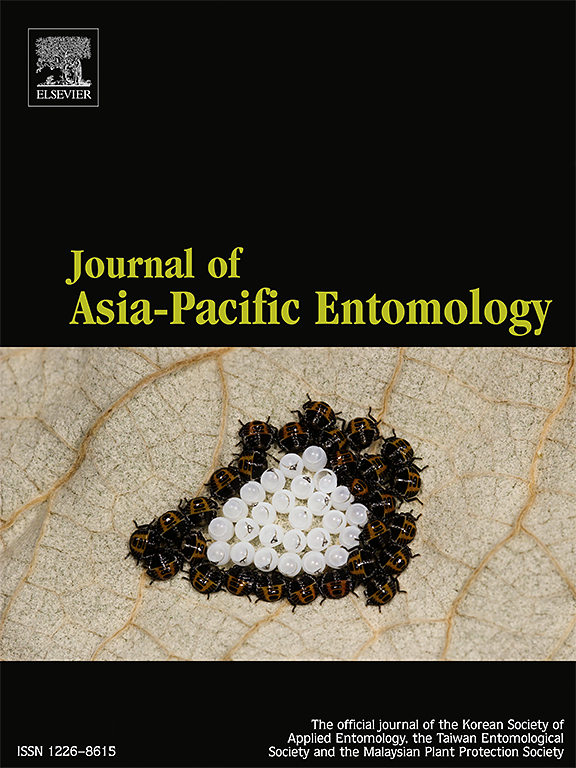Transcriptomic analysis of Drosophila melanogaster larvae exposed to dimethyl phthalate reveals molecular insights into developmental retardation
IF 1.3
3区 农林科学
Q3 ENTOMOLOGY
引用次数: 0
Abstract
Dimethyl phthalate (DMP), a ubiquitous environmental pollutant, has been recognized for its capacity to impede biological development. Therefore, it is crucial to understand the mechanism by which DMP inhibits biological processes. This study employed the Drosophila melanogaster larvae as a model organism to explore the mechanisms of developmental retardation induced by DMP exposure via a transcriptomic approach. The results showed that 1.2 g/L DMP exposure induced developmental retardation in larvae, as evidenced by a significant increase in the larval-to-pupal transition time compared to the standard diet. Furthermore, transcriptome sequencing revealed 4451 differentially expressed genes (DEGs) in DMP-exposed larvae, comprising 2430 up-regulated and 394 down-regulated genes. These DEGs were predominantly involved in pathways such as carbohydrate metabolism, signal transduction, transporter metabolism, endocrine system, and tumorigenesis. This indicates that developmental toxicity associated with DMP exposure is intricately linked to these pathways, underscoring the need to address the detrimental effects of DMP exposure. To summarize, exposure to DMP at a specific concentration has a deleterious effect on organismal development.

接触邻苯二甲酸二甲酯的黑腹果蝇幼虫转录组学分析揭示了发育迟缓的分子机制
邻苯二甲酸二甲酯(DMP)是一种普遍存在的环境污染物,已被公认为具有阻碍生物发育的能力。因此,了解DMP抑制生物过程的机制是至关重要的。本研究以黑腹果蝇幼虫为模型生物,通过转录组学方法探讨DMP暴露诱导发育迟缓的机制。结果表明,与标准日粮相比,1.2 g/L的DMP暴露会导致幼虫发育迟缓,幼虫到蛹的过渡时间显著增加。此外,转录组测序显示,暴露于dmp的幼虫有4451个差异表达基因(DEGs),其中2430个基因上调,394个基因下调。这些deg主要参与碳水化合物代谢、信号转导、转运体代谢、内分泌系统和肿瘤发生等途径。这表明与DMP暴露相关的发育毒性与这些途径错综复杂地联系在一起,强调了解决DMP暴露有害影响的必要性。总之,暴露于特定浓度的DMP对生物体发育有有害影响。
本文章由计算机程序翻译,如有差异,请以英文原文为准。
求助全文
约1分钟内获得全文
求助全文
来源期刊

Journal of Asia-pacific Entomology
Agricultural and Biological Sciences-Insect Science
CiteScore
2.70
自引率
6.70%
发文量
152
审稿时长
69 days
期刊介绍:
The journal publishes original research papers, review articles and short communications in the basic and applied area concerning insects, mites or other arthropods and nematodes of economic importance in agriculture, forestry, industry, human and animal health, and natural resource and environment management, and is the official journal of the Korean Society of Applied Entomology and the Taiwan Entomological Society.
 求助内容:
求助内容: 应助结果提醒方式:
应助结果提醒方式:


